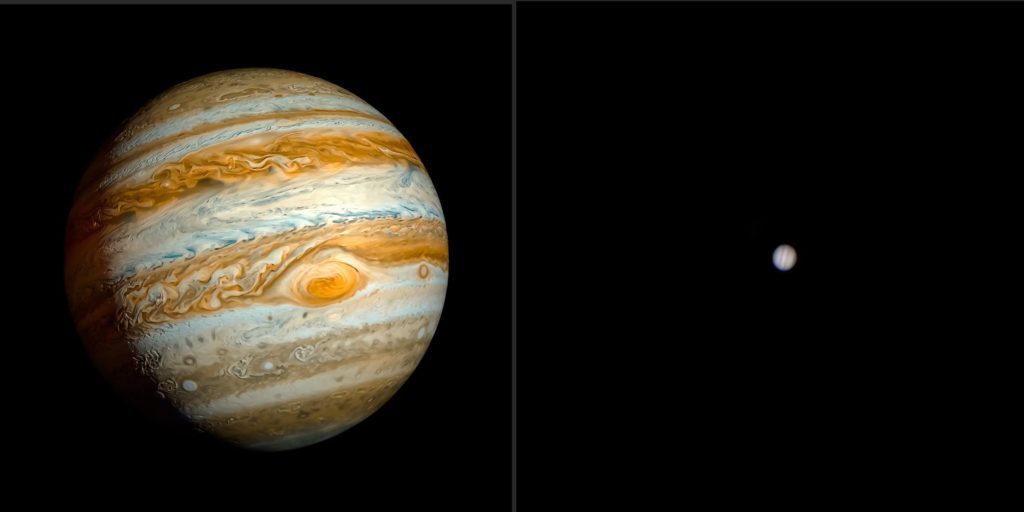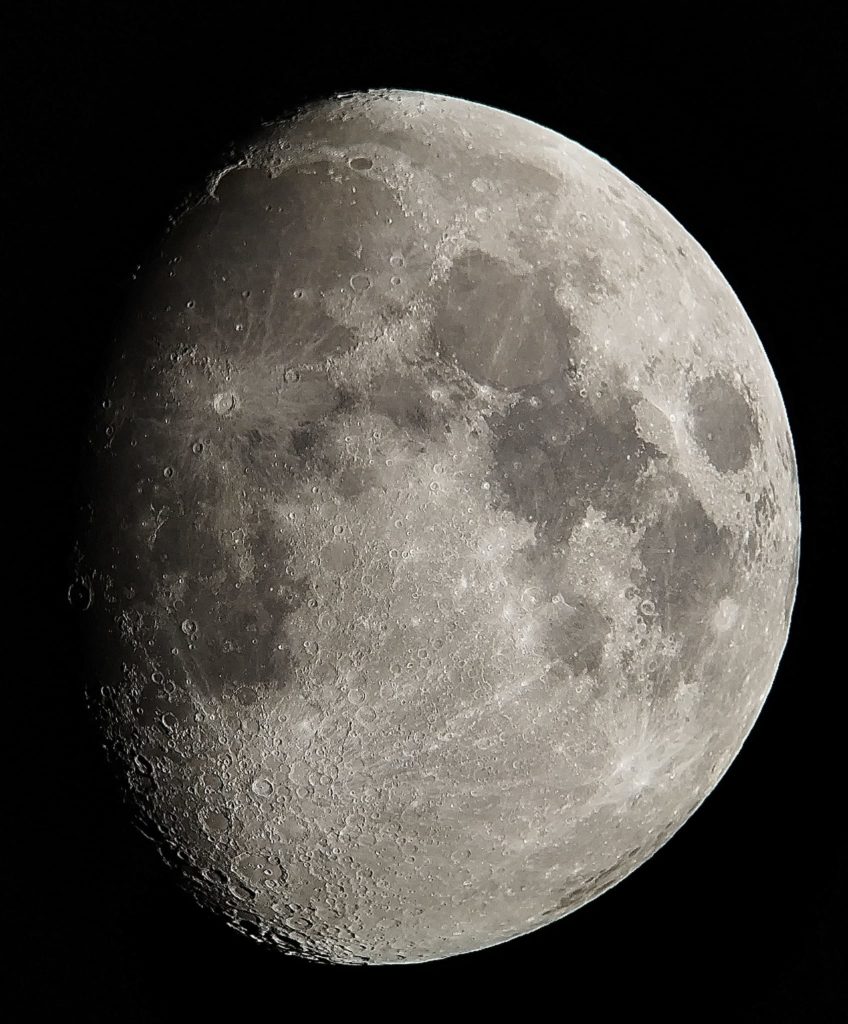During public astronomy events, particularly those involving telescope viewing, the person operating the telescope often becomes an instant authority figure. This proximity to the equipment typically places the individual in a position to answer eager questions from attendees waiting their turn to view celestial wonders. Common inquiries from those first in line often include, “What will we be viewing tonight?” or “What can I expect to see?”
Upon hearing their questions, I typically respond with enthusiasm, saying, “Tonight, we will observe Jupiter and its moons!” This usually garners smiles, exclamations of wonder, and sometimes audible expressions like “Ooohs!” and “Ahhhs!” However, when the viewing commences, the initial excitement sometimes gives way to expressions of confusion or disappointment. This reaction prompts the question: Why the sudden shift in enthusiasm? Why are people disappointed at what they see? Refer to the image below.

The root of this disparity often lies in preconceived notions shaped by photographs of celestial objects found in educational materials, such as books, encyclopedias, magazines such as National Geographic, and media outlets such as TV and the internet. Images from space probes like Pioneer, Voyager, and Galileo have so frequently graced these sources that we tend to forget the vast distances involved. Jupiter, for instance, appears minuscule through a telescope due to its distance of approximately 900 million kilometers. The marvel lies in the telescope’s ability to capture and magnify such distant light.
To rekindle attendees’ wonder, it’s essential to emphasize the telescope’s remarkable capability to gather faint light from vast distances and present it for observation—a testament to the grandeur of amateur astronomy.
Another common scenario involves introducing attendees to objects like the Orion Nebula. Despite initial excitement, the viewing often ends with expressions of confusion or disbelief. Similarly, younger audiences’ reactions can be mixed. When told the telescope will focus on a star, some express surprise upon viewing, questioning why stars don’t appear significantly different through the telescope. Refer to the image below.

This underscores the need for individuals not only knowledgeable in astronomy but also sensitive to public perceptions and expectations. Public astronomy events benefit from guides who can correct misconceptions and nurture curiosity, ensuring attendees grasp the excitement and significance of astronomy in expanding our understanding of the universe.
As a final note, there are instances when the moon becomes an invaluable tool in captivating audiences. I often reserve this celestial object for the end of the viewing session, particularly during specific lunar phases. When announcing that the telescope will focus on the moon, attendees often recall familiar textbook images. However, the sight of lunar craters through the telescope never fails to elicit gasps of awe, especially from first-time viewers. This moment reaffirms the moon’s role as a “showstopper” and serves as a reminder of the transformative power of astronomy in inspiring wonder and curiosity.

/rmherrera